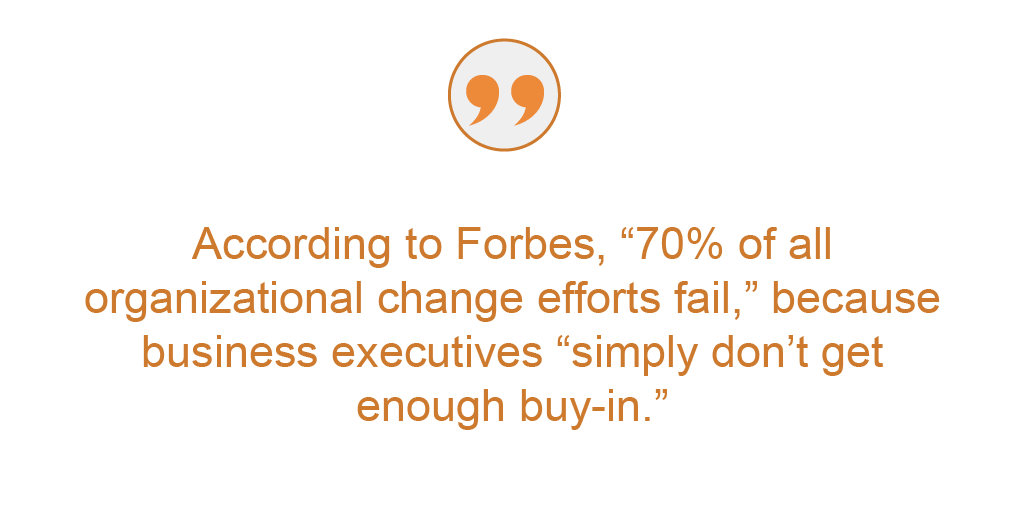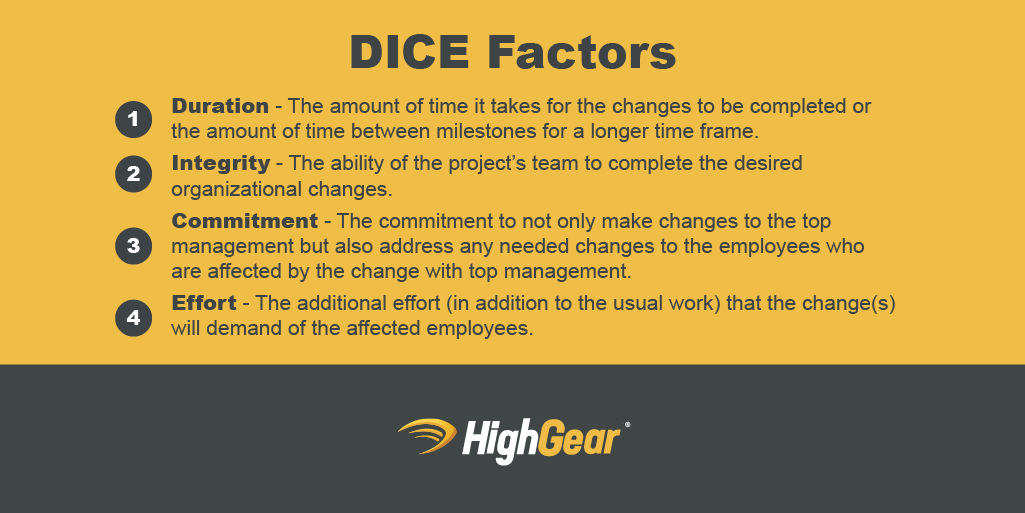
As society faces continuous technological advancements, businesses are finding themselves needing to continue adopting new and more advanced technologies and structures to stay competitive. However, many companies are seeing newly implemented systems fail.
This is especially true in the world of software implementation. Organizations are seeing new technology take way too long to deploy or they see implementations outright fail. While the successful deployment of new software often brings with it more efficient processes and a streamlined system, the process of adopting and putting new software in place is often far from efficient. Because of this, many companies see large amounts of money and work hours wasted on failed software implementations.
Why is this?
Anytime new software is introduced into an organization’s system a whole set of challenges come up. Because each deployment brings with it new features and operational changes, the entire organization must learn how to operate with the technology before anything can get done.
While there are many reasons why implementing software may fail or take a long time to be fully implemented in an organization, there are a few major reasons why so many businesses are seeing less than optimal deployment. Lack of stakeholder buy-in, cultural readiness for change, and support for change management are three of the most common — and most influential — reasons why your organization may be facing failed software implementations.
Here, we take a more in-depth view of the three challenges many businesses face as well as offer some practical tips for overcoming them.
1. Securing Stakeholder Buy-In
First, what is stakeholder buy-in? Essentially, stakeholder buy-in is the support of internal customers, management, and resources of an organization for any decisions made by the business. Put simply, this means stakeholder buy-in is a direct representation of an organization’s desire to implement a change. According to Forbes, “70% of all organizational change efforts fail,” because business executives “simply don’t get enough buy-in.”
As we can see, stakeholder buy-in holds incredible importance in determining how successful any organizational change, such as new software implementation, will be for a business. This is why ensuring engagement and support is number one on our list of critical support required for successful new tech deployment.

So, how can you more effectively secure buy-in for a new software implementation? To encourage stakeholder support, members of the Forbes Business Council recommend encouraging different perspectives on whatever idea you are looking into, maintaining frequent and transparent communication, providing context, testing your concepts, and laying the foundation down early, among other recommendations. One of the most important tips to keep in mind when trying to increase stakeholder confidence is to willingly take advice and suggestions from the people around you. Additionally, HighGear has published a useful resource, 7 Steps for Securing Stakeholder Buy-in for Workflow Automation, that goes a bit deeper on this topic.
2. Ensuring Cultural Readiness within the Organization
In reality, anytime big changes — like introducing new software — happen, people get uneasy. The cultural atmosphere of your organization is no exception to this. As new software and tech adoption become more of an everyday activity across businesses, workers are constantly having to face new challenges and learn new skills.

One of the biggest hurdles for workers is that, oftentimes, they are affected by organizational change, but they do not understand why the innovations are happening. Executives and others who are responsible for driving drastic change are not taking the time to help their employees understand the why of the new approach. This can not only be extremely frustrating for employees but also detrimental to the success of any organizational changes being made.
Luckily, with a little bit of time and effort on the part of business executives and other decision-makers, ensuring a sense of cultural readiness for development within the organization is very achievable. Making sure to transparently explain the purpose of any major changes reassures your employees during times of uncertainty and ensures that they are prepared for any upcoming adjustments. This is incredibly important in helping you foster a change-ready company culture. And above all, just telling your employees about organizational changes is not enough. If you want to achieve successful organizational advances — like a software implementation — you need to explain the why.
3. Driving and Supporting Change Management
Change management is largely defined as the methods that a company uses to implement a different approach to both internal and external processes of the organization. In other words, change management is how a company manages change — as the name suggests. So, what is the big change management challenge that companies face when it comes to implementing new software?

When you are making a dramatic organizational change, like implementing new technology, the adjustment comes to all parts of your company. For example, if the new software you are deploying is related to workflow automation, that software will not only affect your employees whose tasks and processes are being automated but also the managers who no longer need to manually manage those tasks. To ensure that the changes to your organization are sound, you must ensure that the methods that you are using to implement the changes are working and constantly supported.
To ensure that your business can successfully adopt and implement new software changes, your change management system must be prepared as well. The Harvard Business Review utilizes four characteristics — that it refers to as DICE factors — to determine whether or not a change will be successful or not.
The Harvard Business Review defines these DICE factors as:
- Duration – The amount of time it takes for the changes to be completed or the amount of time between milestones for a longer time frame.
- Integrity – The ability of the project’s team to complete the desired organizational changes.
- Commitment – The commitment to not only make changes to the top management but also address any needed changes to the employees who are affected by the change with top management.
- Effort – The additional effort (in addition to the usual work) that the change(s) will demand of the affected employees.
Each of these factors is incredibly useful in helping your business determine whether its change management system is prepared for the change you want to make — and where to focus on it or not.
So, if we know how to assess our environments, is that enough?
While knowing how to assess your organization‘s environment is an essential first step, simply being aware of your environment is not quite enough to ensure a successful software implementation. Of course, you must first be fully aware of the current environment and culture before you can take steps to better prepare it for a change, but it is critical that you take steps to adjust your environment until it is able to successfully handle the change you want to make. According to an article in the International Journal of Computer Applications, an organization must address the following four elements “commitment from leadership, the right technology, the right business process and getting it right with the people inside the organization,” for successful adoption and implementation of software.
Stakeholders still need to be told things like how much work and money the software integration will save. Workers need to understand why the change is being implemented and how it will affect their daily jobs, and management needs to understand how important the change is and be ready to assist in the implementation process.
Alongside the solutions to the main three challenges companies face with software integration that we addressed above, the Harvard Business Review suggests breaking the organizational change into smaller chunks for a smoother and more efficient implementation. This allows your business to not only more gradually introduce the systemic changes of the new software you are implementing to your employees and management but also to use the smaller “chunks” to function as test-runs or “proof of concept” before fully implementing the software.
In conclusion, not knowing how to assess your organization’s environment is not enough to ensure a successful software implementation. It is, however, an absolutely crucial step in the software implementation process. Without accurately assessing your organization‘s culture, you may not be able to take the needed steps to prepare it for the coming organizational changes that software implementation will bring. So, in order to successfully implement new software and achieve successful organizational change, you need to both assess your organization’s current state as well as take those crucial steps to better ready your organization for the changes to come.
